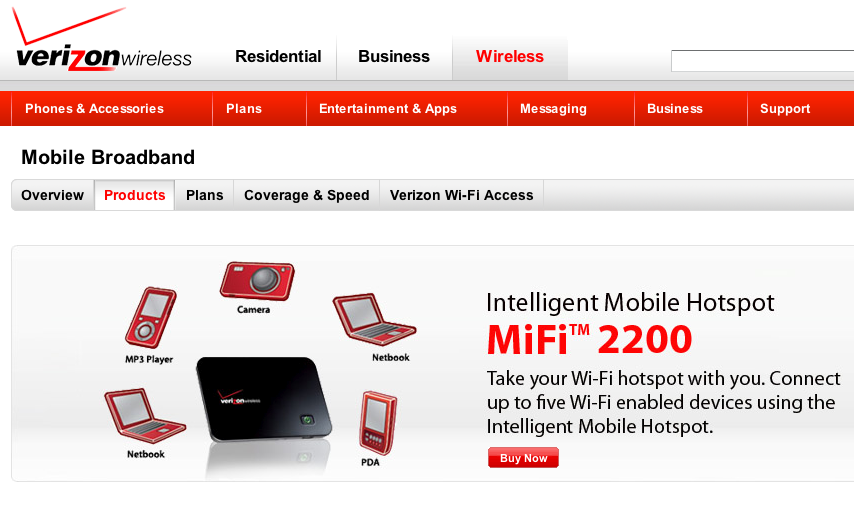Could Apple's MiFi meltdown have been avoided with a WiFi investment?

When I walked into the Moscone Convention Center in San Francisco for yesterday's Steve Jobs keynote speech, I already had a plan for connectivity so I could post live blog updates. I've been to Moscone many time and know first-hand how unreliable the WiFi can be.

But now there's a new wrinkle in the connectivity issue and it's called MiFi. The mobile hot-spot technology takes a cellular data signal and creates a small WiFi network out of it, allowing other users - maybe there's a team of people blogging, tweeting and uploading photos and video at an event - to tap into it and avoid the whole crappy-wifi-in-the-auditorium problem.
The problem is that if 10 percent of the 5,000 people in an audience create their own WiFi networks in that room, there are now 500+ "networks" all competing for the same wireless spectrum to transmit those signals - including the original WiFi networks that the presenter has established in the room.
It seems that that may have been the problem that created the embarrassing on-stage moment for Apple CEO Stave Jobs yesterday when his demo crashed because the iPhones he was using couldn't maintain a solid WiFi connection.
So what's a company like Apple to do to prevent this from ever happening again? To get an understanding of the options, I reached out to my buddies over at Proxim Wireless for some schooling.
In a nutshell, the best way to get around this is to understand the connectivity needs of your audience and cough up enough dough to make sure that the in-house WiFi is robust enough so that guys like me can use it to do our jobs. Shutting down my laptop yesterday so Steve Jobs could run his demo was something I was not willing to do. Just like Steve, I was there to do a job. His was to present. Mine was to liveblog.
Also see: Full ZDNet coverage of Apple's WWDC
I placed a couple of random calls to other convention centers to find out what sort of connectivity they offer. In Las Vegas, for example, a general connection for attendees - which would be different from a locked, dedicated connection for a presenter - would be about 128 kbps to 256 kbps, something designed for sending email but not uploading video.
Hello? Welcome to 2010. What am I supposed to do with 128 kbps?
I asked Robb Henshaw at Proxim what it would take - and cost - to offer a "robust enough" WiFi connection that attendees wouldn't be compelled to create their own MiFi networks. He suggested 3 or 4 T1 lines on the backhaul and maybe as many as 20 different access points that work together to avoid "bumping into each other." What would something like that cost? His estimate is somewhere in the neighborhood of $25,000.
OK, that's a pretty hefty bill, right? Not really. Not if you're a company like Apple, one that's generating billions of dollars in revenue and consistently blowing away Wall Street investors with its quarterly earnings. And really, isn't it worth $25,000 to make sure that Yahoo News is posting stories about your breakthrough technology instead of your embarrassing moment? I know I could be writing a different sort of post today, instead of this one.
So let's say Apple makes the investment. How does it keep all of these people from still creating their own MiFi networks? Simply said, tell us that your WiFi is strong and reliable and ask us to refrain from creating our own networks - maybe when we register, maybe on the big screens in the auditorium itself.
No one at the event yesterday took pleasure in seeing Jobs sweat out a very awkward moment in front of thousands of people. Those Apple fanboys were literally running into the auditorium, eager to get as close as possible and then, when the man himself took the stage, rose to their feet to applaud him. I can't imagine they wanted to see him fail with his demos. (OK - maybe some people took pleasure in it, as this video points out.)
With all of that said, I can't help but wonder how much blame should be shared by the folks at Moscone Center, too. That convention center - built in the 80s - has the bad reputation, not Apple. I have been there many times for many events and the WiFi consistently sucks.
Apple is the type of company that could hold this event anywhere - even its own campus - and still bring in the crowds. What is Moscone doing to keep these conferences out of New York, Las Vegas or, for that matter, the San Jose Convention Center, which is just a few freeway exits away from Apple's HQ in Cupertino?
Maybe this embarrassing moment for Apple was a blessing in disguise. Is Apple going to let this happen again? I doubt it. Does Moscone want to lose Apple's WWDC? Certainly not. I've seen these on-stage WiFi slowdowns in the past - and they're never pretty.
But Apple's was especially ugly, given the spotlight that was on that event. Was it ugly enough to bring about some change?